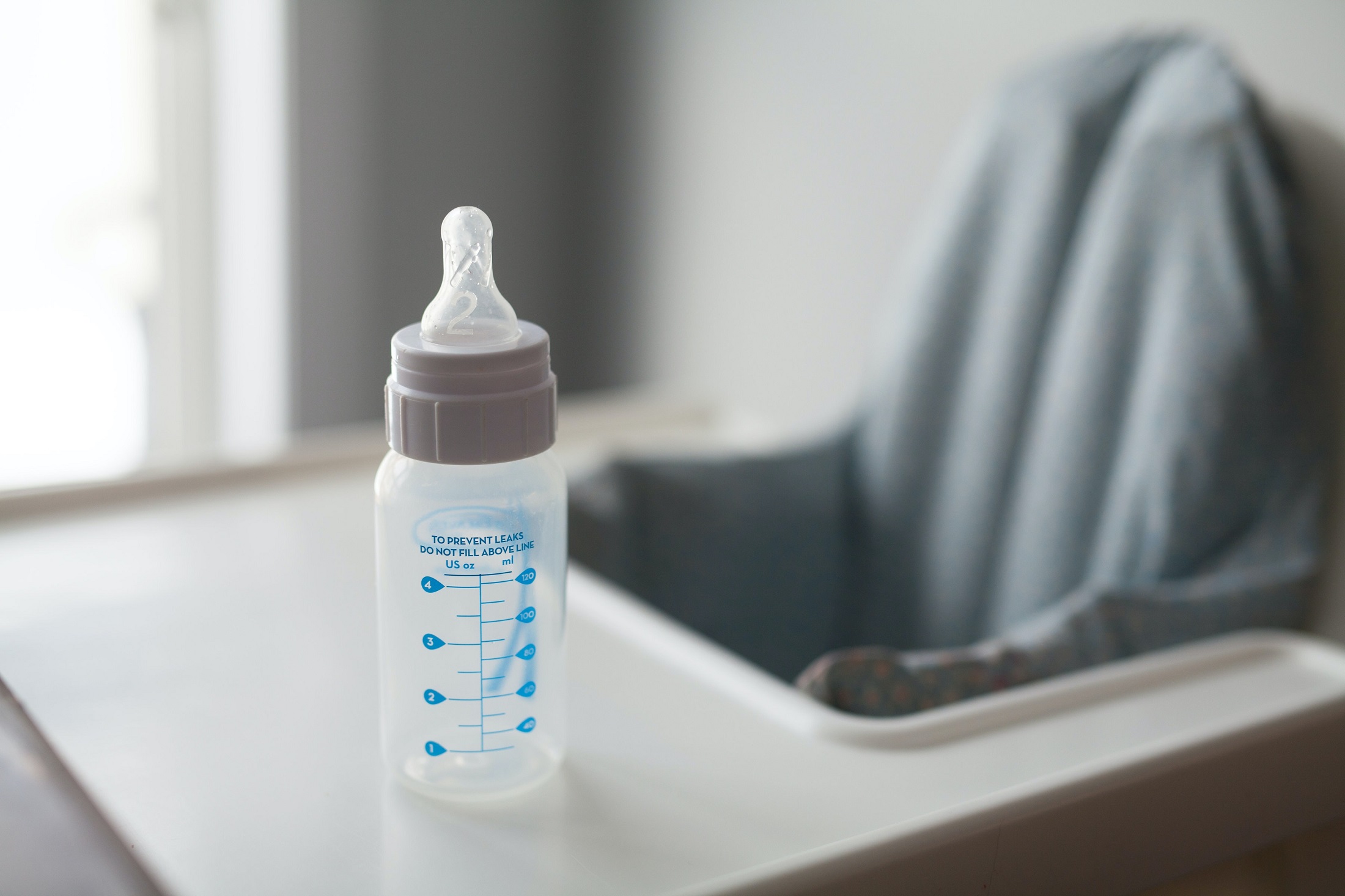
Sponsored article
The editorial office is not responsible for the content of the article and the personal views of the author.
On the market we can find a huge number of bottles for feeding babies. The rich choice can be overwhelming for parents-to-be completing the layette for their child. What should be taken into account when shopping? How to feed the baby from a bottle and what should you know about hygiene of accessories designed for children?
In the first months of a baby’s life, the size of a feeding bottle is very important. Newborns consume less food than older babies. If from the first days of life the baby is fed from a bottle, a bottle of the smallest possible capacity should be chosen. A newborn drinks 90-110 ml at a time. A bottle with a capacity of 120 to 150 ml is therefore best for your baby. Later on, water and juices can be given in a small bottle. The capacity of the bottle should be adjusted to the age of the child. For older babies, accessories that hold 240-300 ml of food will be suitable.
It is worth choosing a bottle with a simple shape. In the first six months of life it is very important to maintain the most hygienic conditions while caring for a baby. The bottle should therefore be easy to clean and sterilize.
When choosing an accessory for feeding your baby, you also need to consider the material of a particular model. Glass bottles look aesthetically pleasing and do not change the taste or smell of food. They are easy to clean and sterilize. Unfortunately, glass bottles are quite heavy and may break. They are rather suitable for younger children who do not yet hold a feeding accessory on their own. Plastic baby bottles are light and resistant to damage, therefore they are suitable for older and more mobile babies. Without fear, you can give them to the child to handle. When choosing a plastic bottle, it is essential to check whether it is made of bisphenol A-free material.
An important element of a bottle is a teat. In case of accessories for younger babies, it should have a small opening providing a small flow of food. Bottles with a teat having a larger opening will be suitable for older children, allowing to serve porridge and thicker mixtures as well. In addition, the nipple should be slightly flattened and not too long so that it does not cause discomfort to the baby when swallowing.
During feeding, it is important to place the child in a comfortable position. The baby should be slightly turned towards you and cuddled sideways to your belly. The baby’s head must be higher than its legs. Do not feed the baby lying down, as it may choke on the milk.
When drinking milk, the baby swallows air bubbles. This may cause him to feel full before he drinks the portion prepared for him. When feeding a baby with a bottle, it is necessary to take a break every few minutes, so that the toddler can have a rebound. If the infant falls asleep, remove the teat from its mouth. After feeding, hold the baby upright for a while, supporting its head and back. This is done so that the baby can bounce back.
Baby bottles should be washed immediately after feeding. Dried food is difficult to remove from the nooks and crannies of the teat and the walls of the accessory. Baby bottle detergent should be mild and simple in composition. Some accessories are dishwasher safe – check the manufacturer’s recommendations.
Pacifiers and feeding bottles must be sterilized before the baby is 6 months old. A baby’s digestive tract is sensitive to disease-causing bacteria and it is easy to contract poisoning or diarrhea. Bottles can be sterilized in a special steam sterilizer or in the microwave
When choosing a bottle for an infant, the age of the child should be taken into account. It is necessary to choose the capacity of the accessory, the type of teat and the material of manufacture. Feeding a baby requires taking breaks for rebounding and holding the child in a position with its head raised in relation to the rest of its body. Importantly, bottles and teats need to be washed and sterilized – this way you can take care of the infant’s health and avoid infections within the baby’s delicate digestive system.
Read also: What are the types of baby chairs and what should you consider when buying them?
Main Photo: Burst/ pexels.com